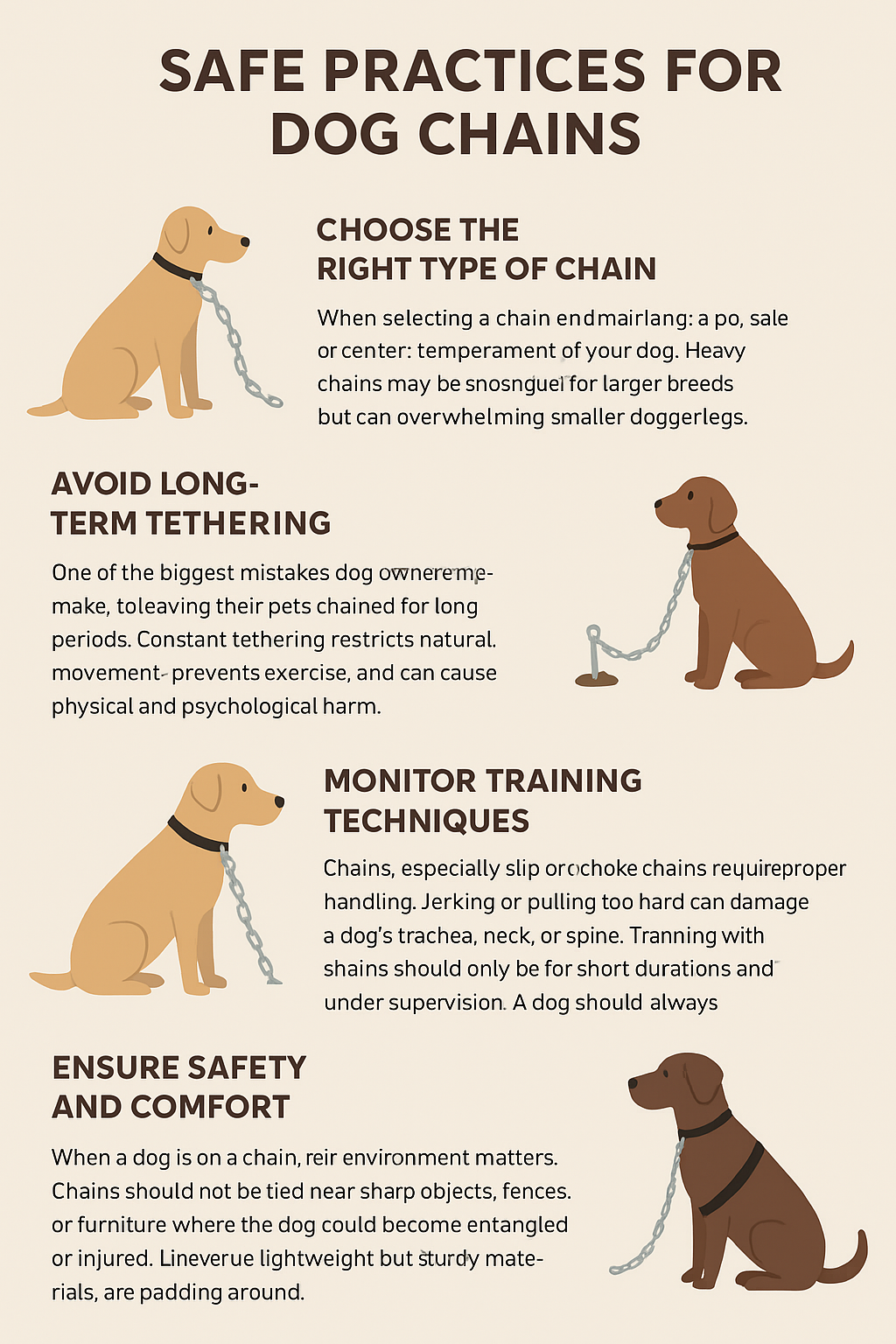Dog chains have long been used by pet owners as a means of control, restraint, and training. While they can serve important purposes, improper use often results in discomfort, stress, and even injury to dogs. Responsible ownership requires that chains, when used, are applied with care and attention to the well-being of the animal.
Choose the Right Type of Chain
Not all chains are created equal. When selecting one, consider the size, breed, and temperament of your dog. Heavy chains may be appropriate for larger breeds but can overwhelm smaller dogs. The collar portion should fit snugly but not tightly; there should be enough room to slip two fingers between the chain and the dog’s neck. For long-term walks and daily use, many trainers recommend using harnesses instead of chains to reduce strain on the neck.
Avoid Long-Term Tethering
One of the biggest mistakes dog owners make is leaving their pets chained for long periods. Constant tethering restricts natural movement, prevents exercise, and can cause both physical and psychological harm. Dogs left on chains for too long often become frustrated, anxious, or even aggressive. If chaining is necessary, it should only be for short durations and under supervision. A dog should always have access to food, water, and shelter while on a chain.
Monitor Training Techniques
Chains are sometimes used in training, especially slip or choke chains. However, these require proper handling. Jerking or pulling too hard can damage a dog’s trachea, neck, or spine. Training with chains should always be gentle, consistent, and paired with positive reinforcement. Ideally, new dog owners should seek guidance from a professional trainer before using chain-based collars to avoid misuse.
Ensure Safety and Comfort
When a dog is on a chain, their environment matters. Chains should not be tied near sharp objects, fences, or furniture where the dog could become entangled or injured. The chain itself should be inspected regularly for rust, sharp edges, or damage that could cause harm. Lightweight but sturdy materials are preferable, and padding around the collar area can help minimize discomfort.
Balance Chains with Alternatives
While chains can be useful for short-term control or training, they should not be the default tool. Harnesses, fabric leashes, and modern training collars often provide safer and more comfortable alternatives. Combining these options ensures a balance between security and your dog’s comfort. Chains should be viewed as temporary aids, not permanent solutions.
Conclusion
Dog chains, when used responsibly, can be a helpful tool for training and control. However, their misuse can lead to serious physical and emotional harm. The key lies in following safe practices: selecting the right chain, avoiding prolonged tethering, using proper training methods, ensuring a safe environment, and balancing chains with alternative tools. Responsible ownership means prioritizing the health, safety, and happiness of your dog. By applying these practices, you can ensure that chains serve as supportive aids rather than sources of harm.



I confirm. So happens. We can communicate on this theme.
——
https://the.hosting/es/help/kak-ustanovit-apache-kafka-na-ubuntu-2004
HI SIR
https://www.anime-planet.com/users/ticketsburjkhalifa
HI SIR
?Necesitas mudarte? https://trasladoavalencia.es ?Necesitas una mudanza rapida, segura y sin complicaciones en Valencia? Ofrecemos servicios profesionales de transporte y mudanzas para particulares y empresas. ?Solicita un presupuesto gratuito y disfruta de nuestro servicio de calidad!
https://msrpetworld.com/
Please contact in our whatsapp no. 7571954124
https://msrpetworld.com/
Please contact in our whatsapp no. 7571954124